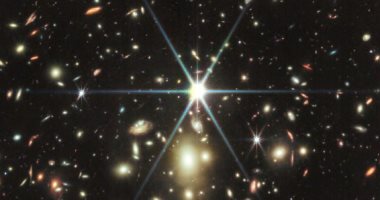A new snapshot from the James Webb Space Telescope shows a stunning view of spiral galaxy M51, also known as the Whirlpool Galaxy, a galaxy so beautiful that it has been designated a spiral galaxy with a grand design for its prominent, well-defined spiral arms. The image shows these arms in their full beauty, as they extend from the center of the galaxy and are captured in infrared wavelengths to show their structure.
The galaxy was captured using two Webb instruments that operate in different parts of the infrared: the Near Infrared Camera (NIRCam) and the Medium Infrared Instrument (MIRI).
In addition to this image, which shows a view that combines data from both devices, the Webb scientists also released a bar image showing NIRCam data on one side and MIRI data on the other, so you can compare the views captured by each device. NIRCam can capture the signature of ionized gas swirling around the center of the galaxy, which is shown in red in the NIRCam image, while MIRI was able to capture the intricate filament structure of cold gas in and around each of the spiral arms.
Located 27 million light-years away in the constellation of Canes Venatici, the Whirlpool galaxy has an unusual relationship with its neighbor, dwarf galaxy NGC 5195. Normally, when one galaxy passes close to another, one or both of them can become gravitational. distorted, and is pulled into an irregular shape. However, in this case, the nearby dwarf galaxy may have had the opposite effect and contributed to the orderly appearance of the spiral.
Observations made by the Hubble Space Telescope indicate that the dwarf galaxy passed behind the spiral, gliding along without deforming any of its arms. However, the gravitational pull of a smaller galaxy may have an effect on the vortex, by increasing the waves of material that fluctuate within the galactic disk. These waves create dense clouds, which collapse to form new stars, and the radiation from these stars illuminates the arms and makes them more prominent

